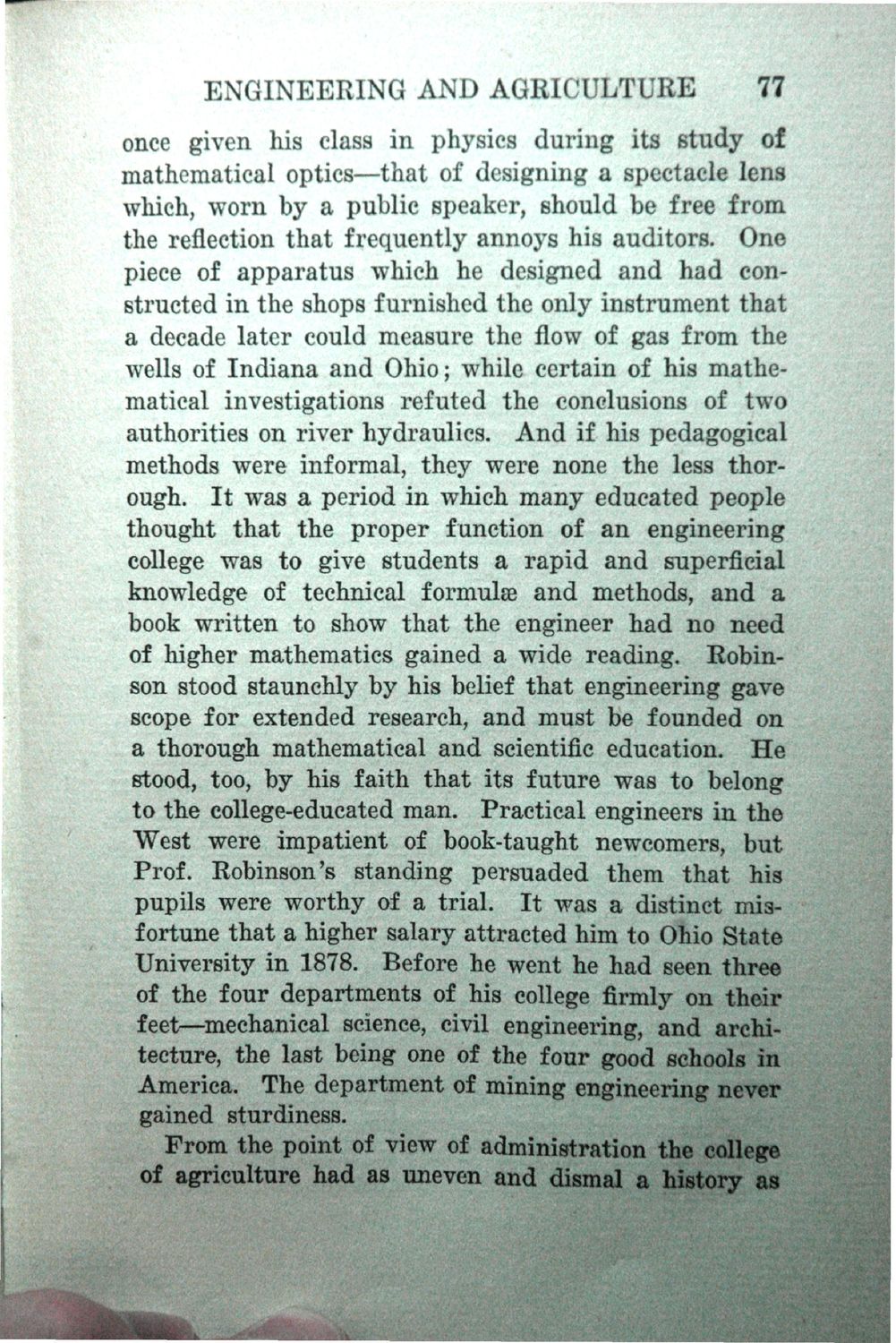| |
| |
Caption: Book - History of the University (Nevins)
This is a reduced-resolution page image for fast online browsing.

EXTRACTED TEXT FROM PAGE:
ENGINEERING AND AGRICULTURE 77 once given his class in physics daring its study of mathematical optics—that of designing a spectacle lens which, worn by a public speaker, should be free from the reflection that frequently annoys his auditors. One piece of apparatus which he designed and had constructed in the shops furnished the only instrument that a decade later could measure the flow of gas from the wells of Indiana and Ohio; while certain of his mathematical investigations refuted the conclusions of two authorities on river hydraulics. And if his pedagogical methods were informal, they were none the less thorough. It was a period in which many educated people thought that the proper function of an engineering college was to give students a rapid and superficial knowledge of technical formulae and methods, and a book written to show that the engineer had no need of higher mathematics gained a wide reading. Jptobinson stood staunchly by his belief that engineering gave scope for extended research, and must be founded on a thorough mathematical and scientific education. He stood, too, by his faith that its future was to belong to the college-educated man. Practical engineers in the West were impatient of book-taught newcomers, but Prof. Robinson's standing persuaded them that his pupils were worthy of a trial|| It was a distinct misfortune that a higher salary attracted him to Onio State University in 1878. Before he went he had seen three of the four departments of his college firmly on their feet—mechanical science, civil engineering, and architecture, the last being one of the four good schoolff|jP America. The department of mining engineering never gained sturdiness. From the point of view of administration the college of agriculture had as uneven and dismal a history as
| |